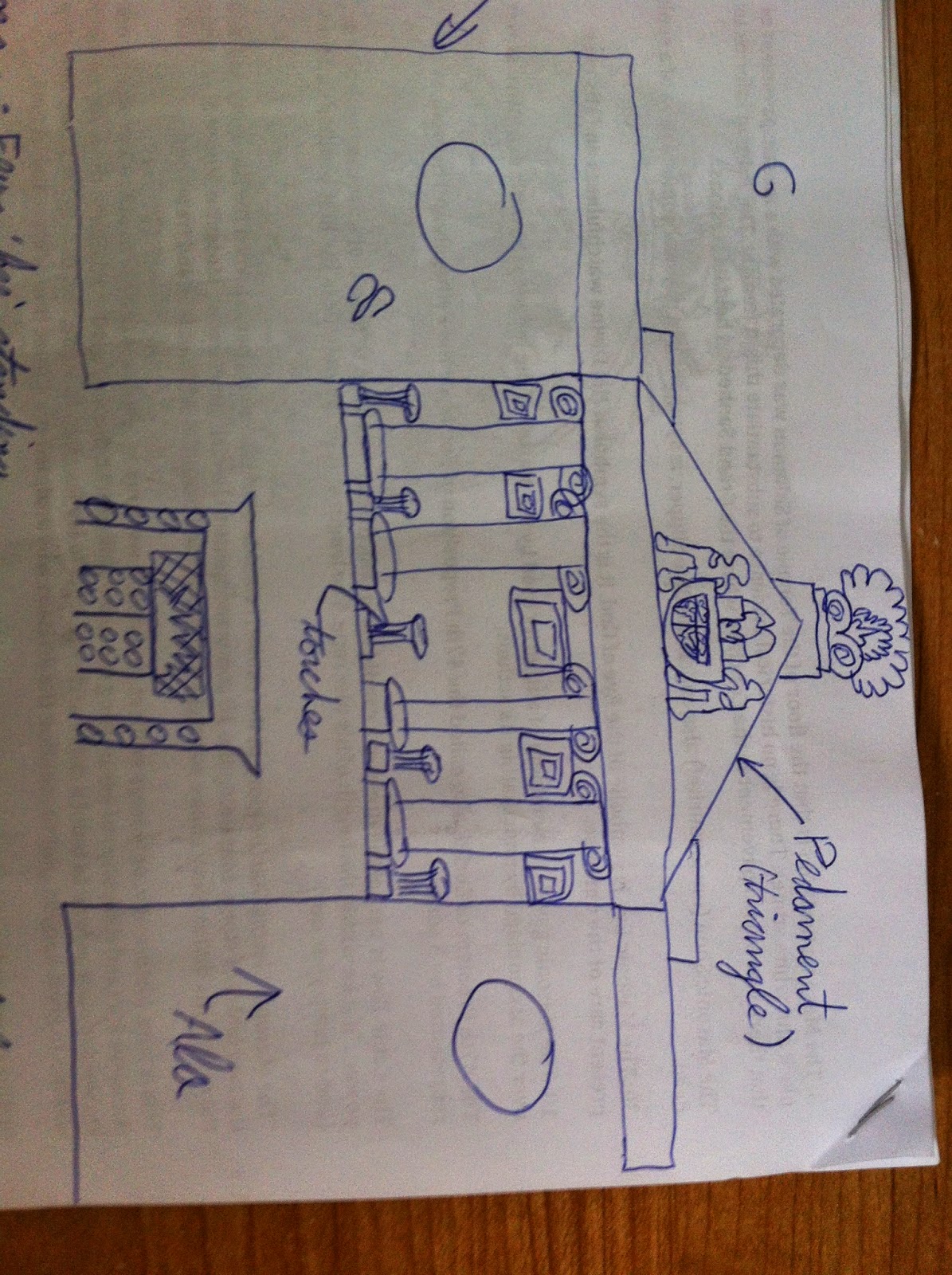Tuesday, 17 March 2015
Museum Visit & Field Trip
Museum Visit
References:
Montreal museum vist.
Museums Readings. Posted on LEA.
Prep Questions Before Visit (First Floor)
Cycladic figures: Excavation in 2006, more than 200 figurines were unearthed. All figurines had "ritually" been broken into 4 pieces and then brought to Keros for "deposition".
Frying Pan: zoomorphic form; terracotta hedgehogs. Shows both humour and naturalism.
Kamares Ware One of the more popular themes for Kamares ware is the 'beak-spouted' jug.
Mycenaean funerary masks: The ceremonial daggers found in the Mycenaean grave circles depict scenes of hunting, lions and 'river life'.
Geometric pottery: Mourners on the geometric pot are tearing at their hair and signing laments.
Mycenaean swords: Type C Mycenaean swords are also referred to as 'horned swords'.
Labrys: Females are generally associated with Labrys in the Minoan religious culture.
Museum Work:
Mycenae:
-Athens. daggers. National Archaeological Museum. 16th century (second half) BC.
-Chania. Mirror/knife. 1450-1500BCE.
-Athens. Cup. National Archaeological Museum. 16th century (second half) BC.
Marble: Naxos created and was known for great marble. The island of Paros was also known for their wonderful marble.
Script: The words in Linear B translated into the mentioning of greek gods/goddesses, olive oil and man/female.
Bronze: Tin and copper are gathered together and melted. Once the metals are melted they are poured into a hardened clay mold. When the metals have cooled the clay mold is removed.
Sources: Most of the sources are from 'Wikipedia'. This is surprising because Wikipedia sources are not reliable. The museum sources should have originated from peer reviewed scholarly works that were published by professionals in the field.
Helmets: The war helmets had been constructed out of copper. This meant that over time they turned green as a result of oxidization.
Prep Questions Before Visit (Second Floor)
A) Ivory was the material used to create the figurines spoken of in the article. This is surprising because ivory was a rare material that was imported from Egypt and Syria. Also, the material eventually disappeared from the market after the Late Bronze Age.
B) The mountain sanctuary discussed by Pausanias is Ptoan Apollo.
Museum Work:
Statue: "The Princess of the Mediterranean" speaks about a grave of a women being found with several female ivory figurines in her tomb. The tomb of this wealthy women might be associated with the Lady of Archotiko.
This is Sparta: Spartan hoplite statue dates to the second quarter of the 5th century BCE. The creation of the statue falls roughly 10 years after the battle of Marathon.
Alexander the Great: The archaeological remains are majestic and beautifully done. The pieces highlight and demonstrate the power that Alexander held and his glorious achievements.
--------------------------------------------------------------------------------------------------------------------------
Masonic Temple
The Masonic lodge is an interesting building because it has elements of both Greek and Roman architecture. The building appears to be constructed out of limestone. The Masonic lodge shows evidence of a Roman 'Maison Carrée'. The architecture of this building like the Romans has only a few 'engaged columns'. These engaged columns create the illusion of a 'peripteral temple'. This differs from the Greeks who designed their temples to be surrounded by 'stylobates'. Also, the Masonic structure was designed with an extending wing to the left and right. These two extra wings, 'alae', link the Masonic building to Roman architectural designs.
In addition, The Masonic lodge has several Greek aspects. The columns used in the structure are designed in ionic fashion. The flat edge between the channels demonstrates Ionic 'fluting'. Also, the entrance of the building has several rossettes around the door. Near the structure' columns we can see two features that highlight Greek influence. Between the ionic columns we can see torches that are designed with a tripod stand holding the piece where the flame would be found. Above the torches, built into the wall between the columns are five squares designed in a way that appears to make them look 'wavy'. This design hints towards a Minoan/bronze age influence. Also, the 'entablature' of the building has another Greek element. The Masonic lodge ties into Greek architecture because it has a 'pediment'. The Parthenon, ancient Greece's greatest temple, has pediments designed into the structure too.
Lastly, the Masonic lodge holds architectural elements that are neither Greek nor Roman. When studying the different elements of the structure you will notice that at the highest point of the building is located an etruscan 'acroteria'. The acroteria was an architectural design that Etruscans implemented on their early temples.
Acroteria:
Masonic Lodge:
Subscribe to:
Post Comments (Atom)


No comments:
Post a Comment